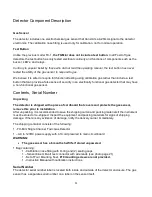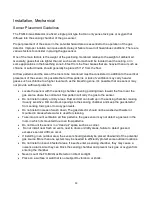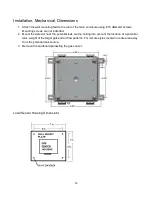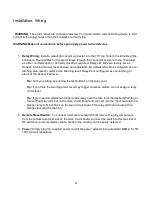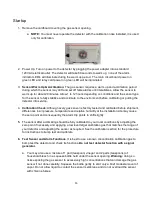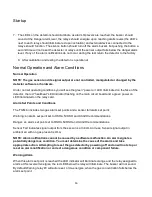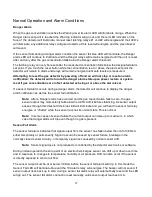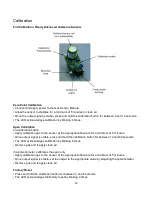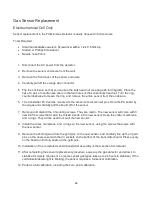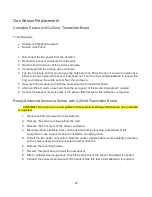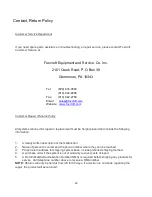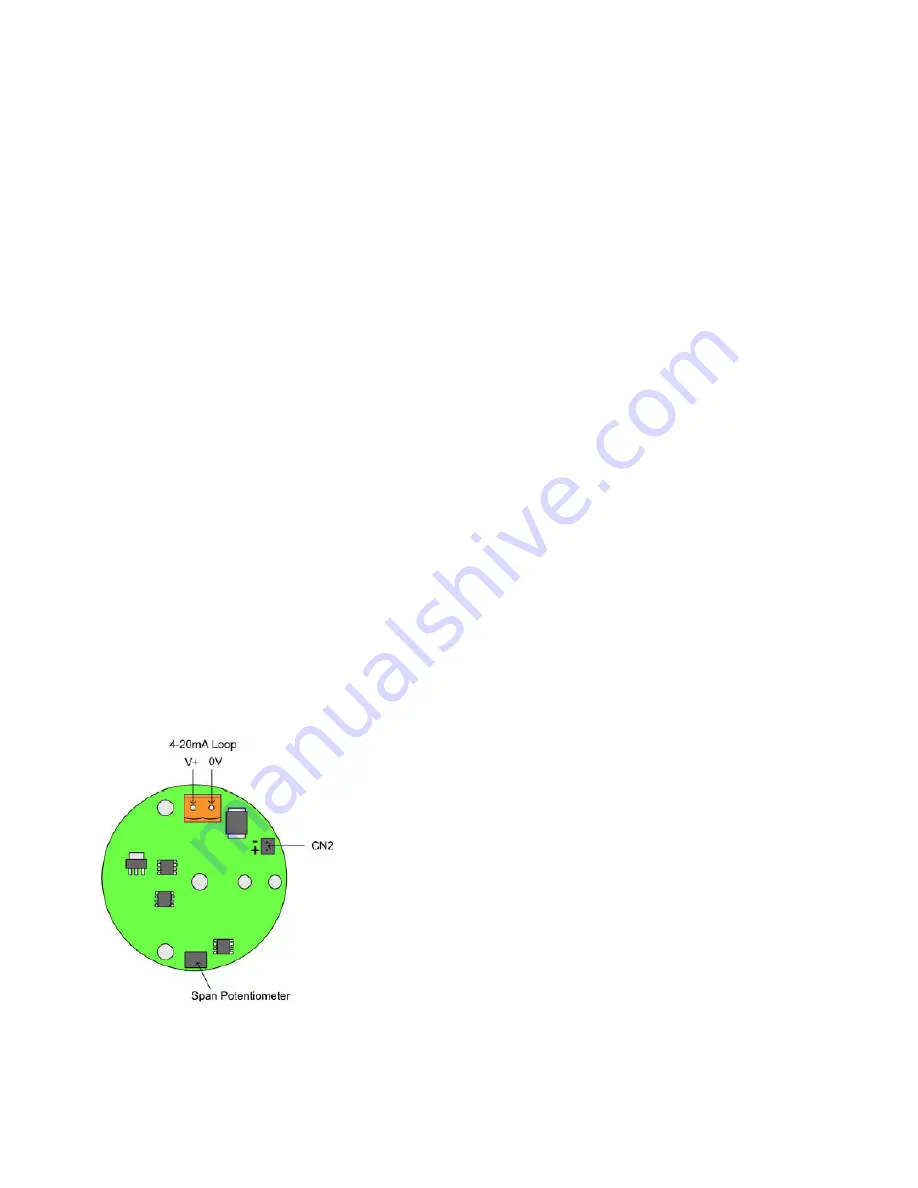
25
Calibration
Full Calibration, Toxic Gas Sensors
The correct voltage output for the target gas being used can be determined as follows:
(16 x gas concentration) / range of 4 x 10mV
a. Example: Calibrating a hydrogen sulfide sensor to a range of 0-50ppm using a
calibration gas concentration of 20ppm:
(16 x 20) / 50 + 4 + 10 = 104 mV
12. With the correct reading displayed on the detector calibration is complete, re-assemble the
detector.
Caution: Be sure to remove the calibration nose before placing the detector into service
.
Never operate the sensor with the calibration nose inserted.
Caution: If the sensor or detector will not allow you to fully adjust the displayed
concentration to match that of the calibration gas then you must replace the gas sensor.
Full Calibration, Oxygen Sensors
Calibration should be carried out in ambient air, and is done simply by adjusting the span potentiometer
until a reading of 20.9% on a scale of 0-25% is displayed on the LED display. Zero point calibration is
not required. Sensor output can be monitored by connecting a multi-meter set to mA to the 4-20mA
loop connector, or to the millivolt connector CN2 using a meter set to VDC.
Oxygen sensors alarm as concentrations, and therefore sensor output, decreases. A 4 mA Oxygen
sensor output corresponds to 16% Oxygen by volume, which is the Danger alarm trip point.
1. Connect the meter leads, observing polarity, to millivolt
test connector CN2 or to the 4-20mA loop connector. Make sure
your meter is set to the correct scale.
2. Ensure that the calibration nose is removed, expose the
sensor to ambient air and allow sensor output to stabilize.
3. Using a small non-metallic screwdriver with a 1.2 x 0.5
mm tip, adjust the span potentiometer until a reading of 17.4 mA
is shown (or 174 mV across CN2). These values correspond to
20.9% O2 on a scale of 0-25%.
4. The calibration is now complete.
5.
To test the alarm functions see the following section
“Sensor Response (Bump) Test. This test requires
a mixture of
16% Oxygen with the balance in Nitrogen and a 0.5 LPM fixed
flow rate regulator with C10 connection.

